by Alan K. Lee
Exploring Bryce Canyon National Park can be an otherworldly experience. Hiking through the eroded limestone hoodoos, you might imagine yourself on another planet – Mars, maybe, or Tatooine. I lack that kind of imagination for the most part, but Bryce Canyon is still a magical place for me. I’ve never seen another place quite like it.
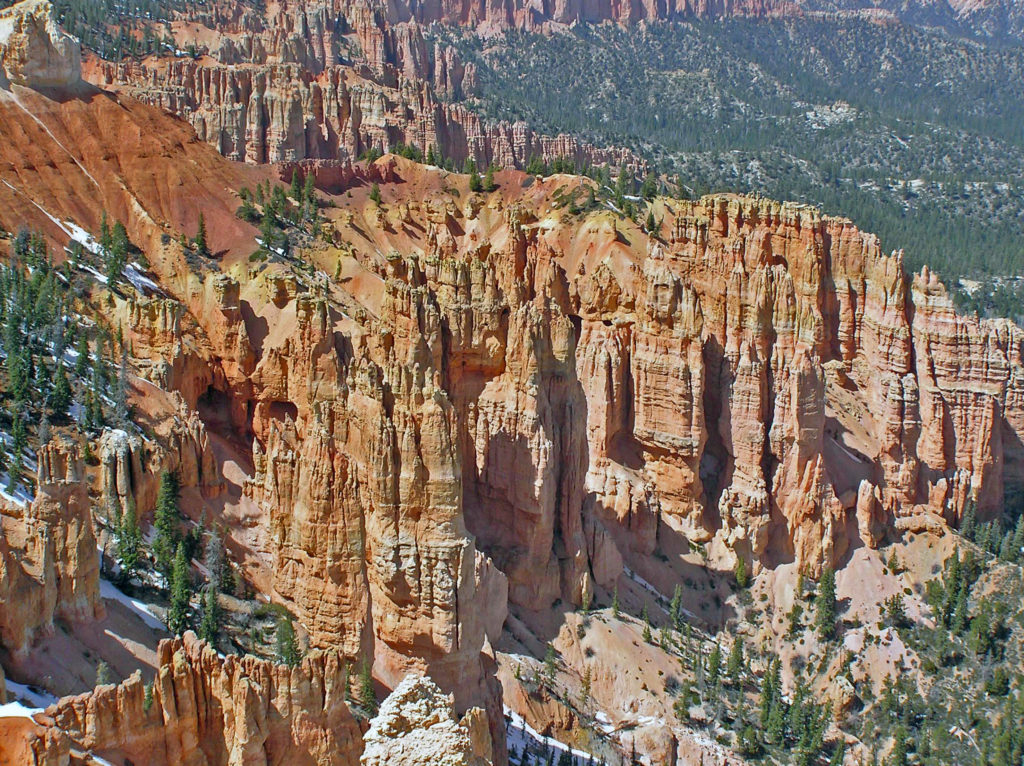
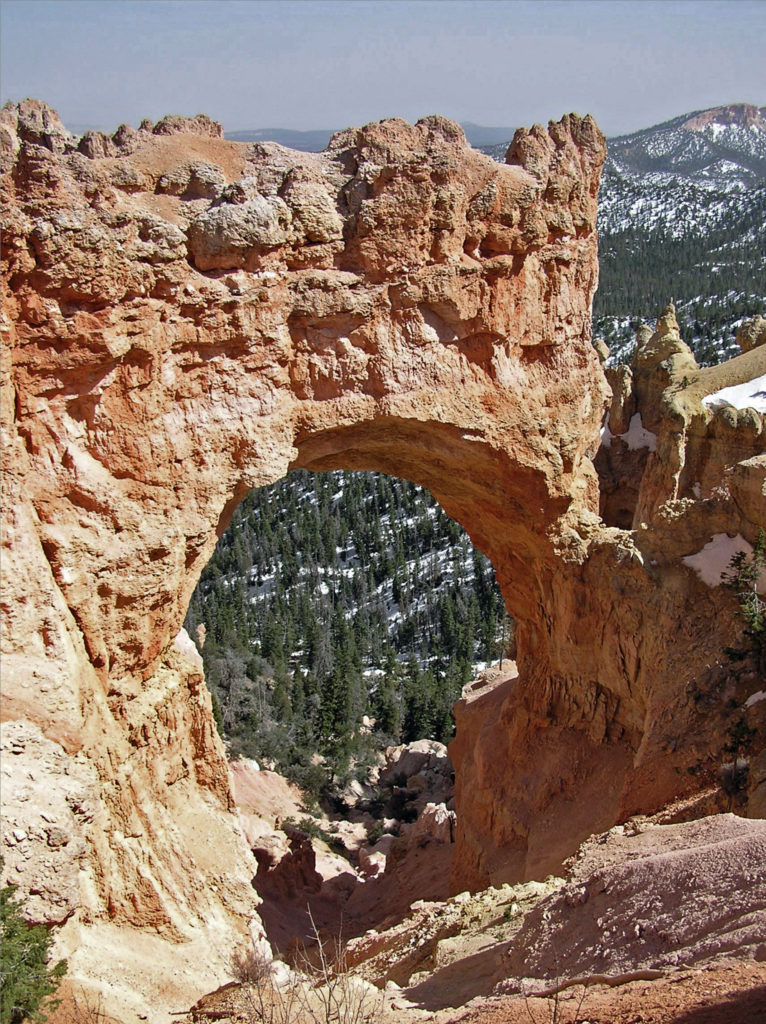

The term “canyon” is a bit of a misnomer here. The park’s main features are the eroded amphitheaters of the slopes of the Paunsaugunt Plateau. The hoodoos were formed through wind erosion and the freeze-thaw cycle, rather than being eroded by running water, so they aren’t true canyons. The park’s namesake canyon is actually just the largest of more than a dozen of those natural amphitheaters. (It’s now called Bryce Amphitheater, not Bryce Canyon, on park maps.)
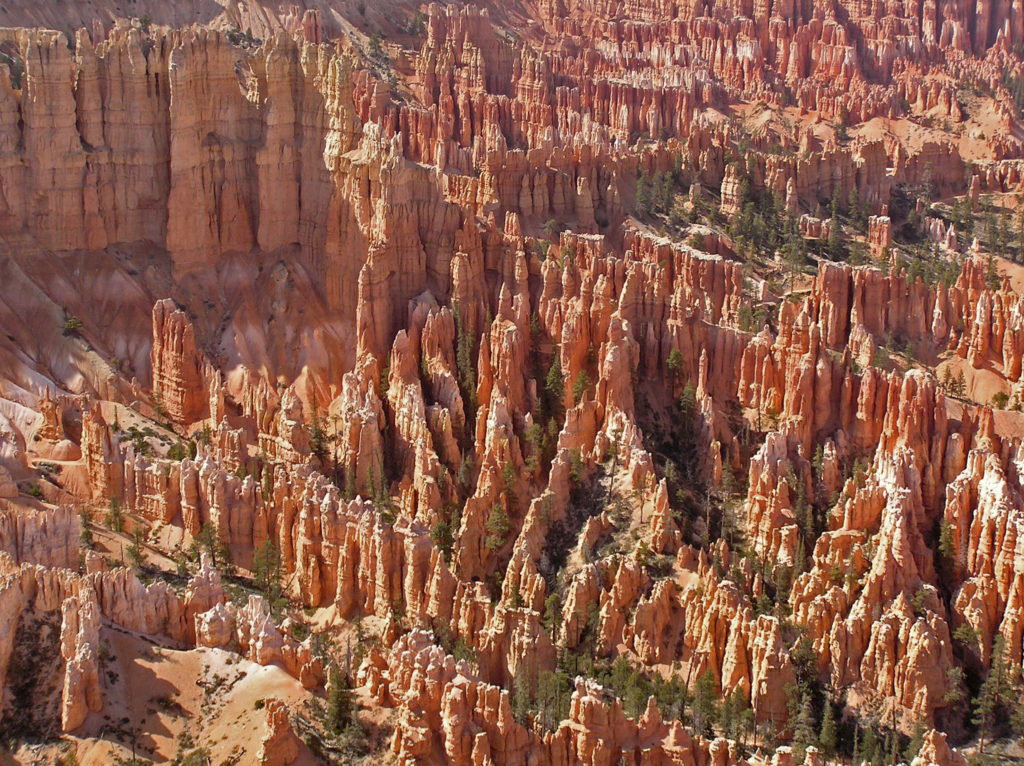
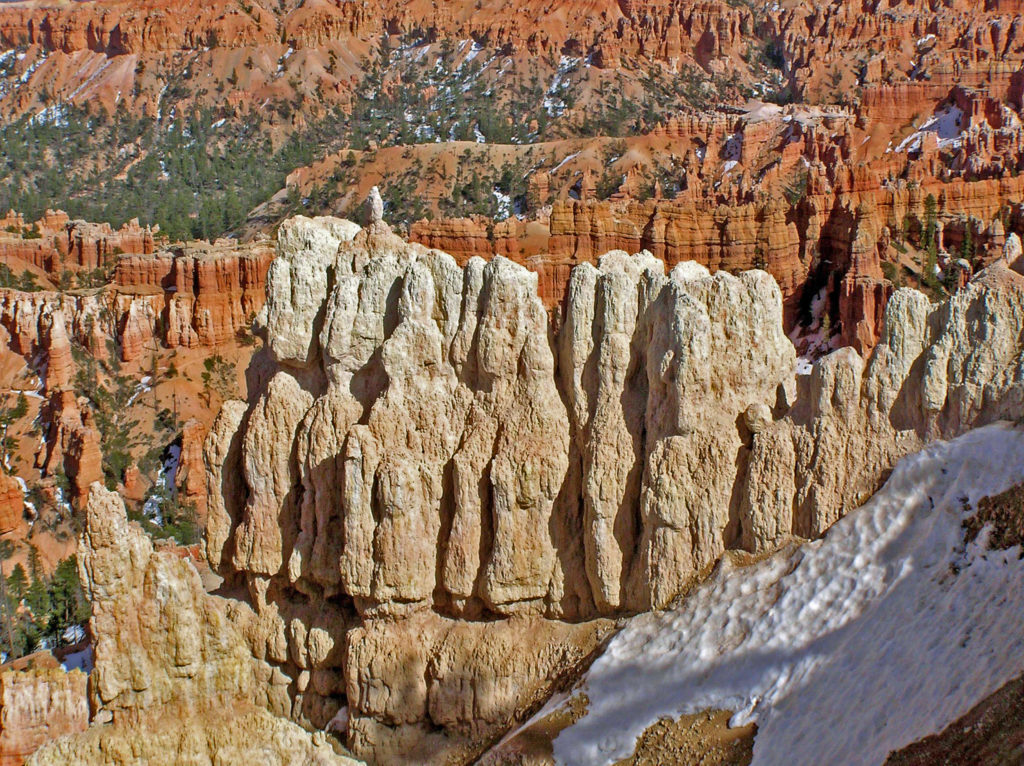
Before you visit Bryce Canyon, there are a few things that you should know about the park. The first is the altitude. The top of the plateau varies from just under 8000 feet to just over 9000 feet in elevation. The air is noticeably thinner than you’re probably used to. Factor that into any hiking plans that you make.
 The altitude also means that nights can be cold there even in the middle of summer. And in spring and fall, it’s not uncommon to encounter cold weather even in the middle of the day. (The photos here were taken in early May and, as you can see, there was still snow in places). Winters are cold, sometimes very, and can be snowy. Many of the trails are closed in winter. But winter also has its charms. Most of the best photos I’ve seen of Bryce Canyon have been taken when the hoodoos were covered in snow.
The altitude also means that nights can be cold there even in the middle of summer. And in spring and fall, it’s not uncommon to encounter cold weather even in the middle of the day. (The photos here were taken in early May and, as you can see, there was still snow in places). Winters are cold, sometimes very, and can be snowy. Many of the trails are closed in winter. But winter also has its charms. Most of the best photos I’ve seen of Bryce Canyon have been taken when the hoodoos were covered in snow.
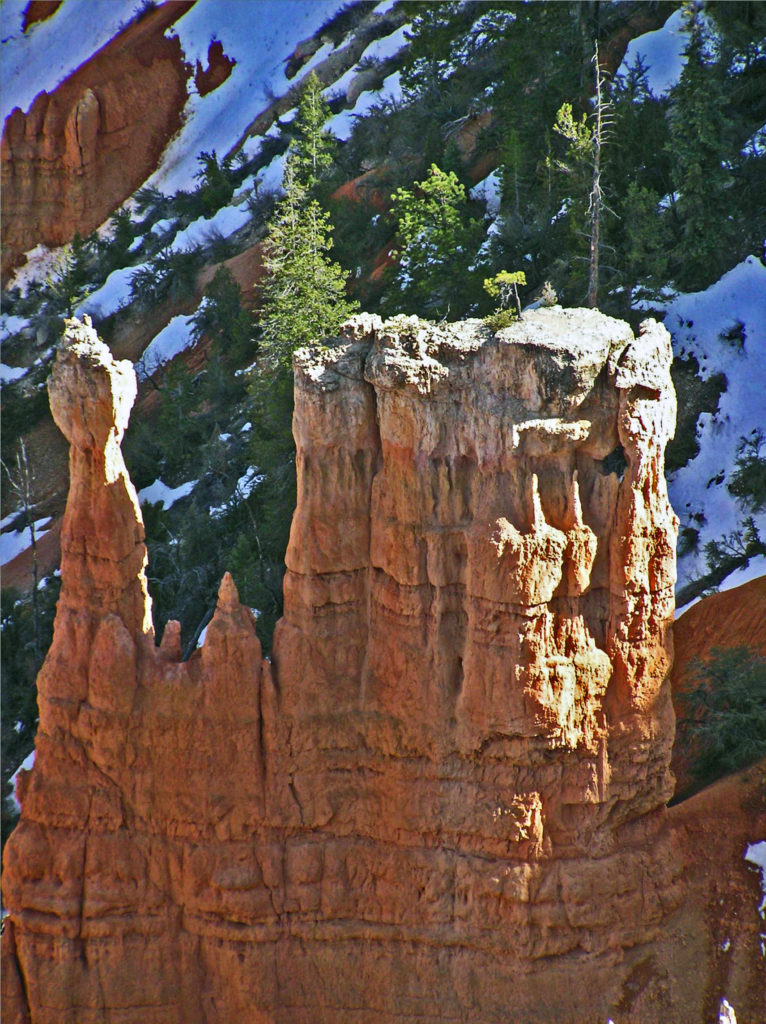

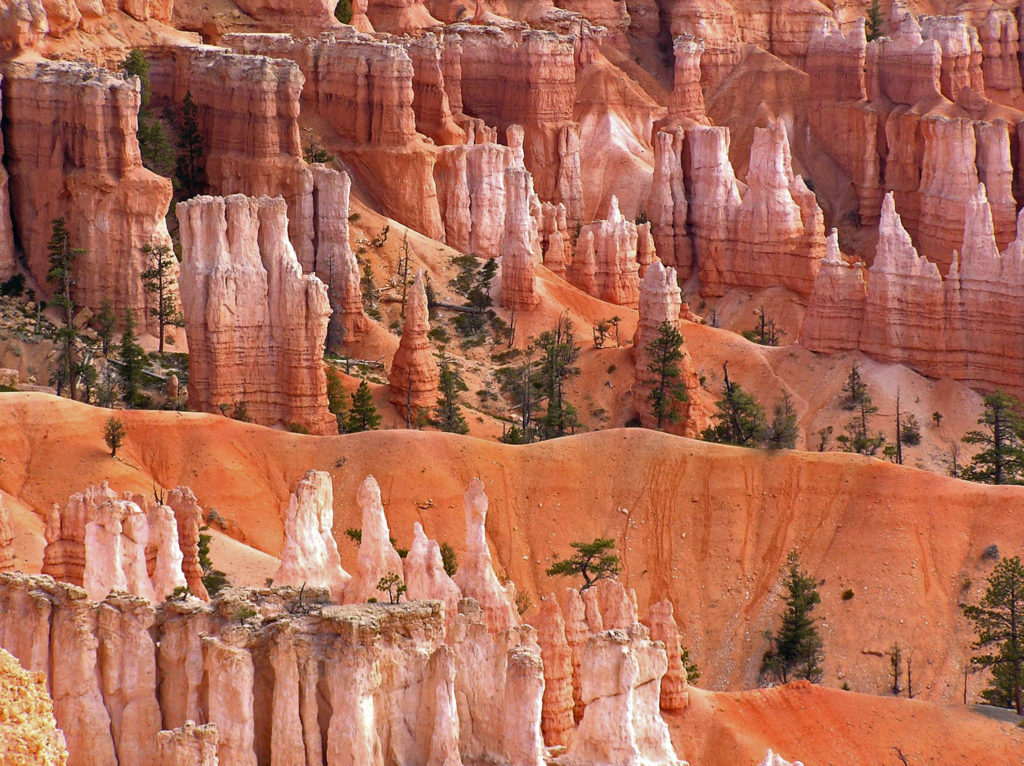
The second thing you should know is that Bryce Canyon is a very popular place in the summer. The park gets more than two million visitors each year, the vast majority of them between the middle of June and the middle of September. The area around Bryce Canyon Lodge can be very crowded at times, as can the various viewpoints along the 18 mile rim drive.
 The good news is that you don’t have to hike very far into the hoodoos to get away from the crowds. There are a number of loop and out-and-back trails that will get you away from the crowds, some of them fairly easy hikes. The rim trail along the edge of the Bryce Amphitheater can also get you away from the worst of the crowds without actually descending into the hoodoos. And if you don’t want to (or can’t) hike into the amphitheaters, there are mule rides available. Check at the visitor center when you arrive. Some of the trails in the park are also paved and wheelchair accessible.
The good news is that you don’t have to hike very far into the hoodoos to get away from the crowds. There are a number of loop and out-and-back trails that will get you away from the crowds, some of them fairly easy hikes. The rim trail along the edge of the Bryce Amphitheater can also get you away from the worst of the crowds without actually descending into the hoodoos. And if you don’t want to (or can’t) hike into the amphitheaters, there are mule rides available. Check at the visitor center when you arrive. Some of the trails in the park are also paved and wheelchair accessible.
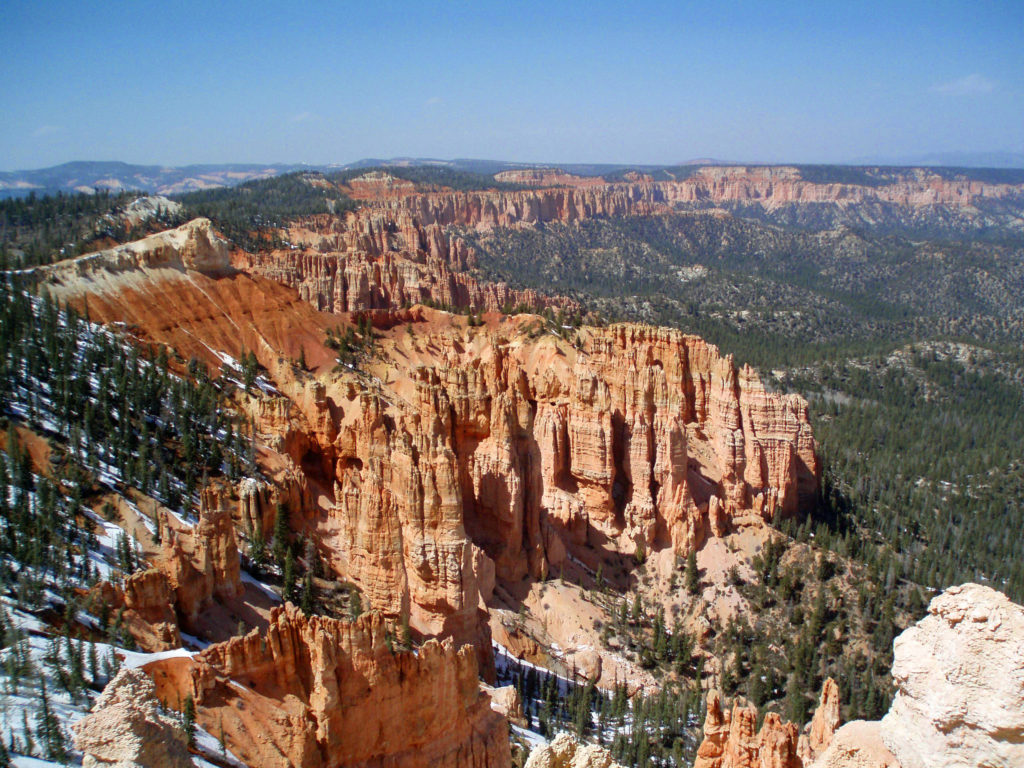
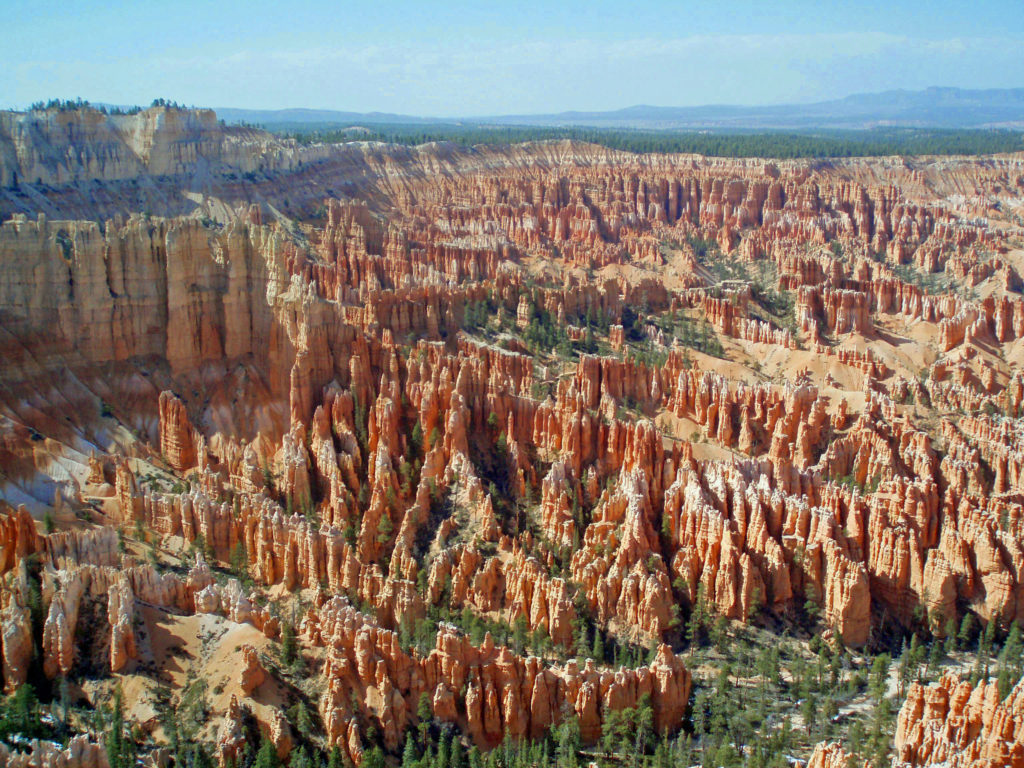
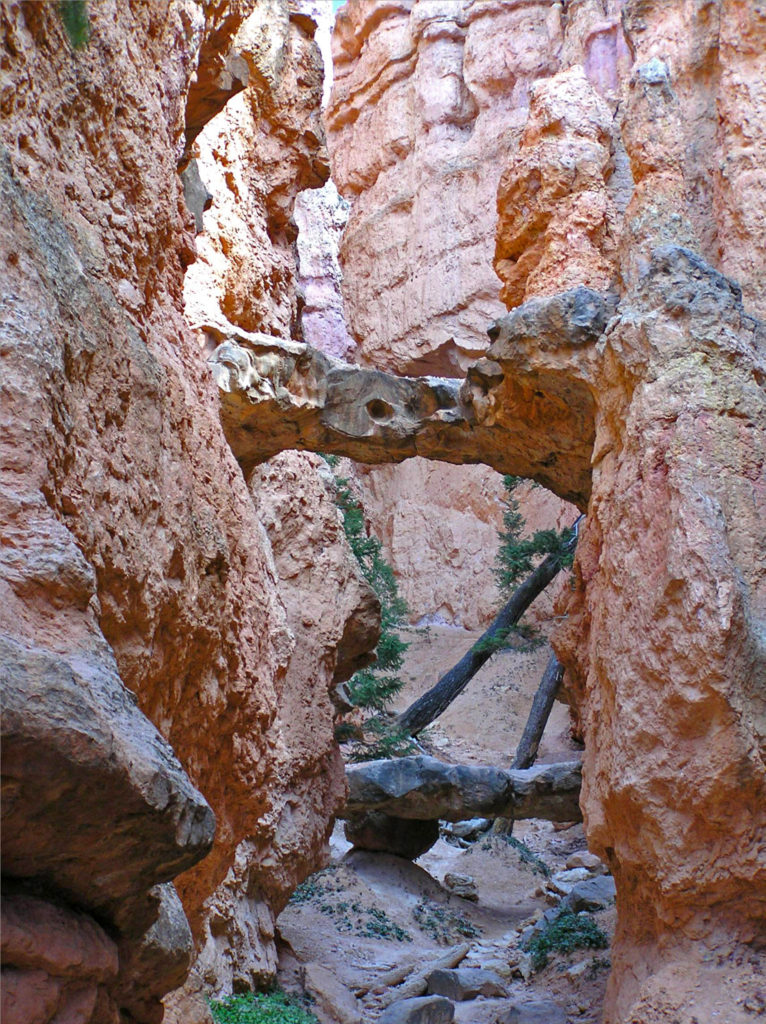 The only road in the park (other than a section of Utah Hwy 12 that cuts across the far northern end of the park) runs north to south along the top of the Paunsaugunt Plateau from the park entrance to Yovimpa Point and Rainbow Point at the southern end of the plateau. Because the park receives so many visitors in the summer, traffic congestion can be a problem. Consider parking your car at the visitor center or the lodge and taking the free shuttle that runs the length of the park. The buses run frequently and you can hop off at any of the viewpoints and catch a later shuttle if you want to do some hiking or just sit and enjoy the scenery for awhile. Taking the shuttle also makes point to point hikes possible without having two cars.
The only road in the park (other than a section of Utah Hwy 12 that cuts across the far northern end of the park) runs north to south along the top of the Paunsaugunt Plateau from the park entrance to Yovimpa Point and Rainbow Point at the southern end of the plateau. Because the park receives so many visitors in the summer, traffic congestion can be a problem. Consider parking your car at the visitor center or the lodge and taking the free shuttle that runs the length of the park. The buses run frequently and you can hop off at any of the viewpoints and catch a later shuttle if you want to do some hiking or just sit and enjoy the scenery for awhile. Taking the shuttle also makes point to point hikes possible without having two cars.
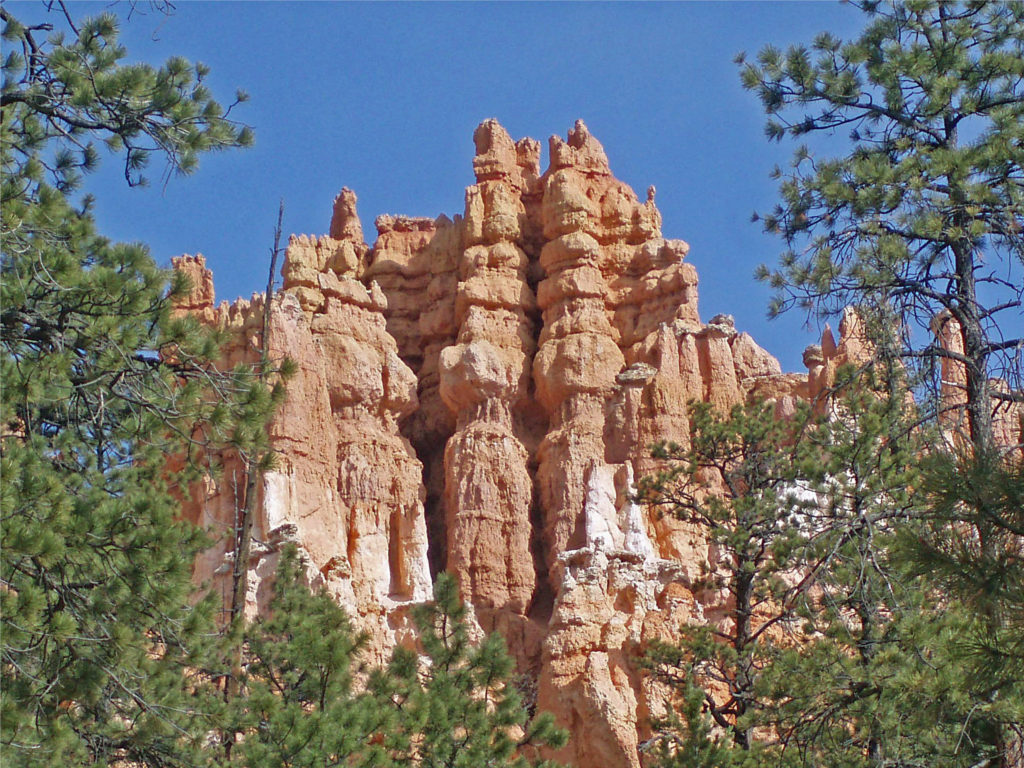 Besides being a spectacularly beautiful place during the day, Bryce Canyon is also great place to star gaze. It’s far from any light polluting urban areas, and the night skies in the park can be incredible. The park offers both astronomy programs and guided full moon hikes. Check the Bryce Canyon National Park website for more information.
Besides being a spectacularly beautiful place during the day, Bryce Canyon is also great place to star gaze. It’s far from any light polluting urban areas, and the night skies in the park can be incredible. The park offers both astronomy programs and guided full moon hikes. Check the Bryce Canyon National Park website for more information.
 The park website is a good place to begin when planning a trip to Bryce. The Utah.com website also has a lot of good info. The Travel Awaits what to know and best places to stay web pages are also full of very useful information.
The park website is a good place to begin when planning a trip to Bryce. The Utah.com website also has a lot of good info. The Travel Awaits what to know and best places to stay web pages are also full of very useful information.
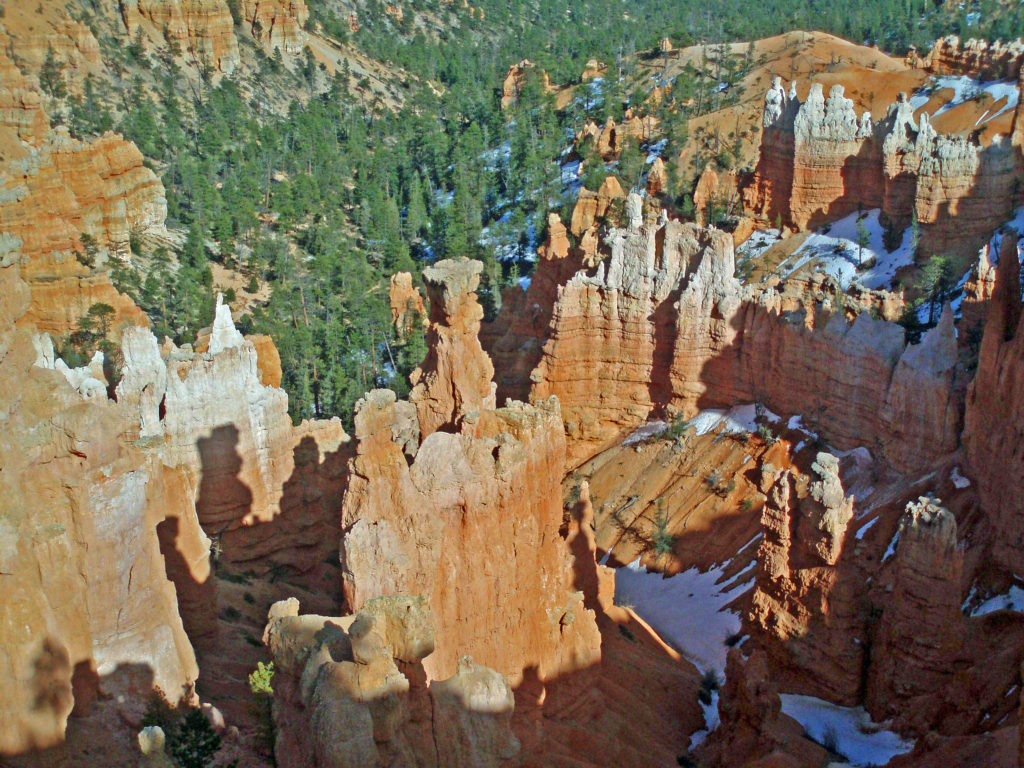
 The Covid-19 pandemic is still with us as I write this (Feb. 2022), but the park is open with only a few restrictions. Masks are still required for everyone, regardless of vaccination status, in all NPS buildings, crowded outdoor spaces, and all forms of enclosed public transportation. But there are no other restrictions and all facilities are open. Additional details are available on the park website and at www.nps.gov/coronavirus.
The Covid-19 pandemic is still with us as I write this (Feb. 2022), but the park is open with only a few restrictions. Masks are still required for everyone, regardless of vaccination status, in all NPS buildings, crowded outdoor spaces, and all forms of enclosed public transportation. But there are no other restrictions and all facilities are open. Additional details are available on the park website and at www.nps.gov/coronavirus.
 If you’re not ready to begin traveling again, though, here are links to a short video by National Geographic, a ten minute video by Amazing Places On Your Planet, and an hour and fifteen minute documentary from the 4K Relaxation Channel. There is also a six minute video on the park website.
If you’re not ready to begin traveling again, though, here are links to a short video by National Geographic, a ten minute video by Amazing Places On Your Planet, and an hour and fifteen minute documentary from the 4K Relaxation Channel. There is also a six minute video on the park website.
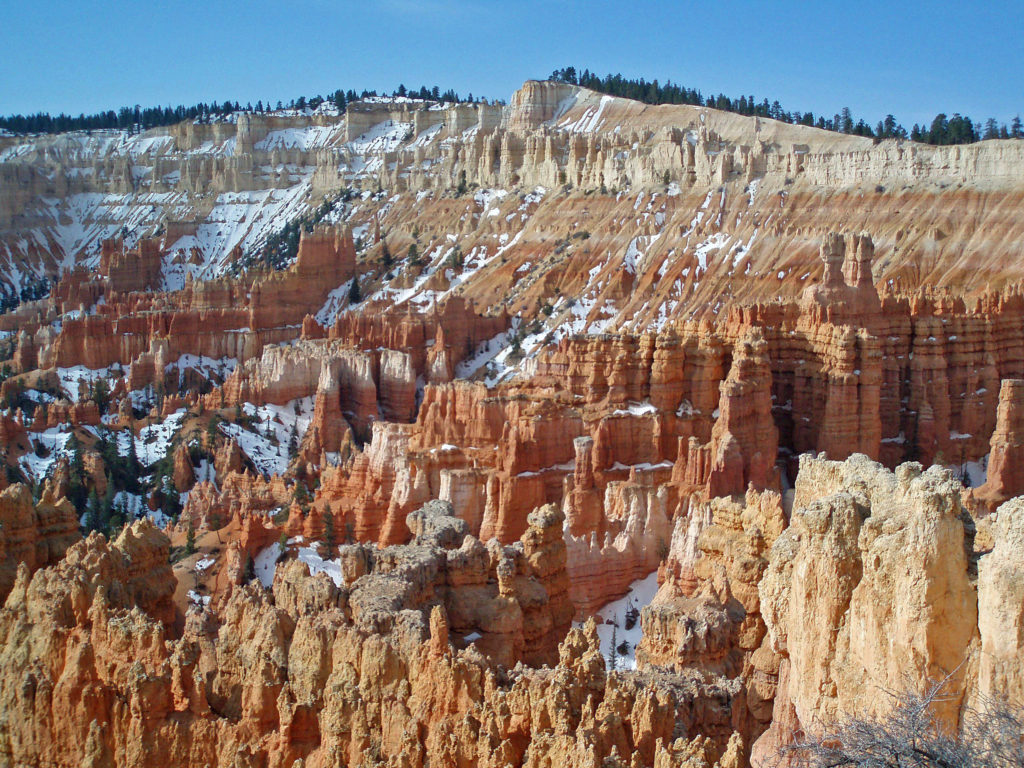
The videos don’t give you the full experience of actually being there, of course, but they will give you a taste of what the park offers, and maybe help to tide you over until you can safely travel there in person once the pandemic has run its course.

Bryce Canyon is one of southern Utah’s five national parks (the “Big Five” ): Zion, Bryce, Capitol Reef, Arches, and Canyonlands. Throw in the sprawling Grand Staircase-Escalante National Monument, Cedar Breaks National Monument, Kodachrome Basin State Park, Coral Pink Sand Dunes State Park, Natural Bridges National Monument, and Lake Powell, and you have the makings of a truly epic road trip.
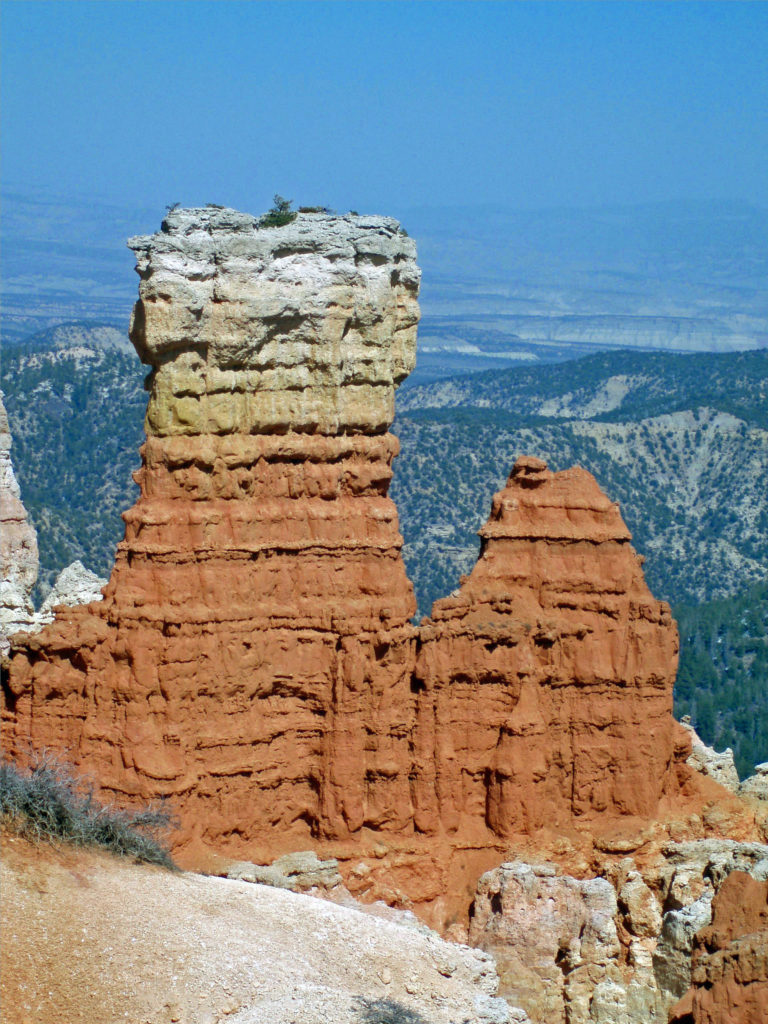 Originally posted March 20, 2020. Updated and re-posted February 19, 2022.
Originally posted March 20, 2020. Updated and re-posted February 19, 2022.
All photos © Alan K. Lee

